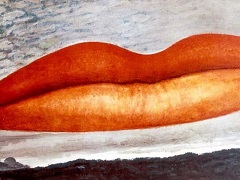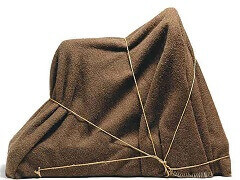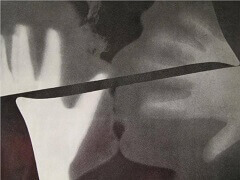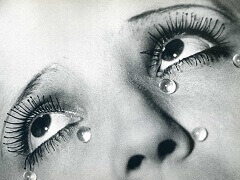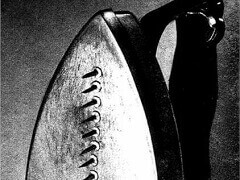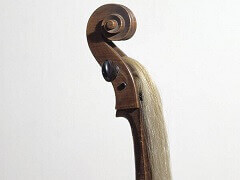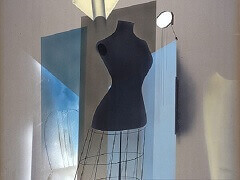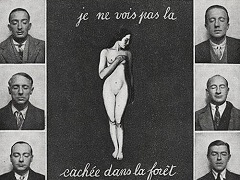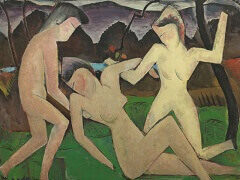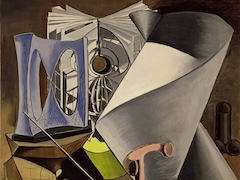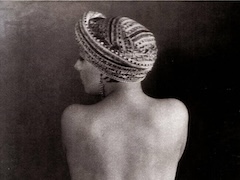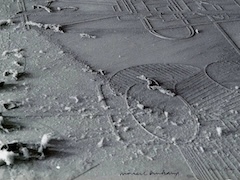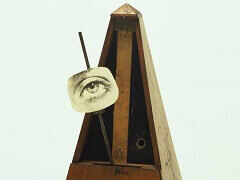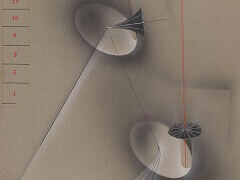Five Figures, 1914 by Man Ray
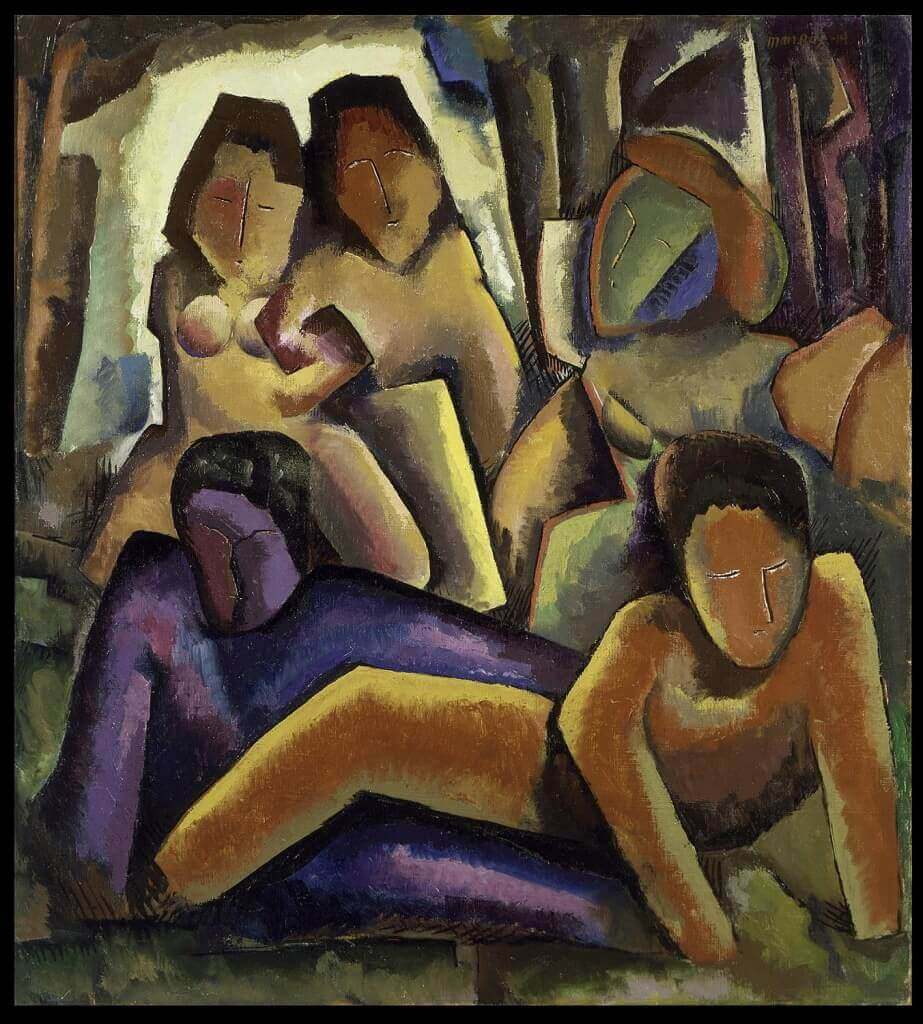
When Five Figures was acquired by the Whitney Museum in the late 1950s, Man Ray was asked to fill out a questionnaire explaining, among other things, his motives for having painted the picture. It was in this context that he identified the painting as "one of a series of compositions inspired by forms in primitive sculpture." Indeed, there can be little doubt that the masked figure was derived from sources in African art; the pointed chin and generally ovoid cast of the head resemble similar details found in Baule masks, while the repetition of short parallel lines on the side of the face may have come from the striated patterns common to many Kota reliquaries.
Like Pablo Picasso's Les Demoiselles d'Avignon, Man Ray's Five Figures was preceded by a number of preliminary studies: one for the two seated or crouching figures on the upper left, and another for the two reclining figures in the lower foreground. Both of these studies were executed in watercolor, a medium conducive to the use of a bright and tonally atmospheric palette, qualities that, to a degree, are retained in the final composition. The reclining figures are exceptionally bright and colorful, clearly in contrast to the predominantly monochromatic palette of most Analytic Cubist painting. The figures themselves are placed in opposing positions, in the fashion of river gods in Renaissance and Baroque art. The comparison may not be entirely coincidental, for the subject of Five Figures may have been inspired by his recollection of having seen nude women bathing by the side of a river during his camping trip to the Ramapo Hills.

